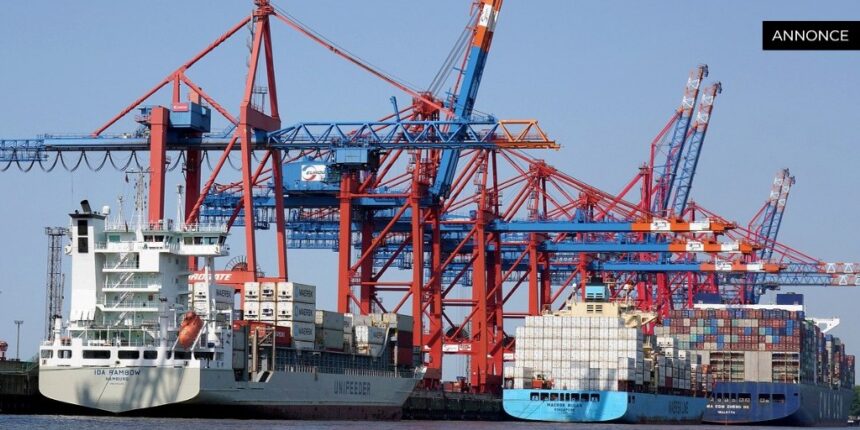Embarking on a journey through the world of maritime logistics, ship chartering stands as a crucial element in global trade and transportation. For businesses and individuals seeking to move goods across oceans, understanding the intricacies of vessel chartering solutions can be the key to efficient and cost-effective shipping.
Understanding Ship Charter: The Basics
Ship chartering is the practice of hiring a vessel to transport cargo from one port to another. This arrangement allows businesses to move goods without the need to own and maintain their own fleet of ships. The process involves several parties, including the charterer (the entity hiring the vessel), the shipowner, and often a broker who facilitates the transaction. Chartering agreements can vary widely in terms of duration, ranging from single voyages to long-term contracts spanning several years.
There are several types of charter arrangements, each suited to different needs and circumstances. Time charters involve hiring a vessel for a specific period, during which the charterer has operational control of the ship. Voyage charters, on the other hand, are agreements for a single journey between designated ports. Bareboat charters represent a more comprehensive arrangement where the charterer assumes full responsibility for the vessel’s operation, essentially leasing the ship as if it were their own.
The Intricacies of Charter Parties
At the heart of every ship charter is the charter party, a legal document that outlines the terms and conditions of the agreement. This crucial contract specifies details such as the vessel’s particulars, the nature of the cargo, loading and discharging ports, lay time (the time allowed for loading and unloading), and demurrage rates (penalties for exceeding lay time). Negotiating a charter party requires a deep understanding of maritime law and industry practices, as well as a keen eye for potential risks and liabilities.
Charter parties often include clauses addressing various contingencies, such as war risk, piracy, and force majeure events. These provisions help allocate risk between the charterer and the shipowner, providing a framework for resolving disputes that may arise during the charter period. Given the complexity of these agreements, many businesses choose to work with experienced brokers or shipping consultants to navigate the chartering process.
Factors Influencing Ship Charter Decisions
Selecting the right vessel and charter arrangement involves careful consideration of numerous factors. The nature and volume of the cargo play a significant role in determining the type of ship required, be it a bulk carrier, container ship, or specialized vessel like a reefer for temperature-sensitive goods. The intended route and potential port restrictions also influence vessel selection, as not all ships can access every port due to size or draft limitations.
Market conditions significantly impact charter rates and availability. The shipping industry is notoriously cyclical, with rates fluctuating based on global trade patterns, fuel prices, and geopolitical events. Savvy charterers keep a close eye on market trends, sometimes opting for longer-term charters to hedge against rate increases or securing spot charters to take advantage of temporary dips in pricing.
| Charter Type | Typical Duration | Operational Control | Cost Structure |
|---|---|---|---|
| Time Charter | Months to Years | Charterer | Daily Rate + Fuel |
| Voyage Charter | Single Trip | Shipowner | Lump Sum or Per Ton |
| Bareboat Charter | Years | Charterer | Daily Rate (All Costs) |
Navigating Challenges in Ship Chartering
While ship chartering offers flexibility and potential cost savings, it also comes with its share of challenges. One of the most significant issues charterers face is the risk of delays. Weather conditions, port congestion, and mechanical problems can all lead to unexpected holdups, potentially resulting in substantial demurrage charges or missed delivery windows. To mitigate these risks, experienced charterers build buffer time into their schedules and carefully negotiate lay time provisions in their charter parties.
Another challenge lies in ensuring the suitability of the chartered vessel for the intended cargo and route. This requires thorough due diligence, including vessel inspections and verification of certifications. Charterers must also be mindful of regulatory compliance, particularly concerning environmental regulations such as emission controls and ballast water management. Failure to adhere to these regulations can result in hefty fines and operational disruptions.
The Future of Ship Chartering
The ship chartering industry is evolving rapidly, driven by technological advancements and changing global trade dynamics. Digital platforms are streamlining the chartering process, making it easier for charterers to find suitable vessels and negotiate terms. These platforms often incorporate data analytics, providing insights into market trends and helping charterers make more informed decisions.
Sustainability is becoming an increasingly important consideration in ship chartering. As environmental regulations tighten, charterers are showing a growing preference for eco-friendly vessels with lower emissions and more efficient fuel consumption. This trend is likely to accelerate in the coming years, potentially reshaping the global fleet and influencing charter rates for greener vessels.
The rise of autonomous shipping technology also promises to revolutionize the industry, potentially leading to new charter models and operational efficiencies. While fully autonomous vessels are still on the horizon, incremental automation is already impacting ship operations and crew requirements, factors that charterers will need to consider in their future planning.














